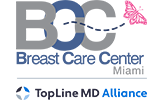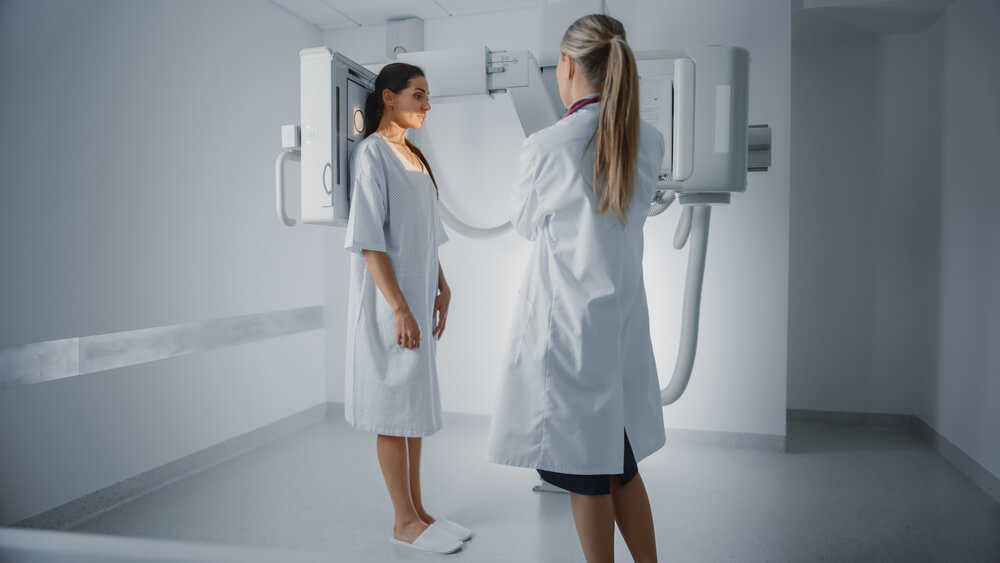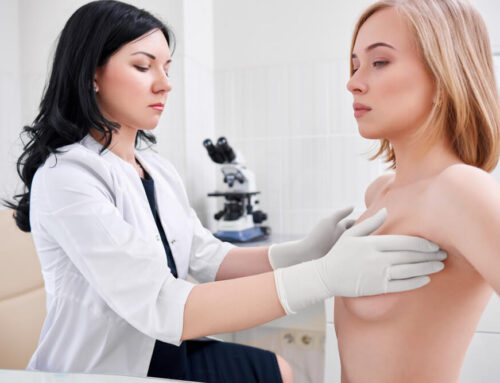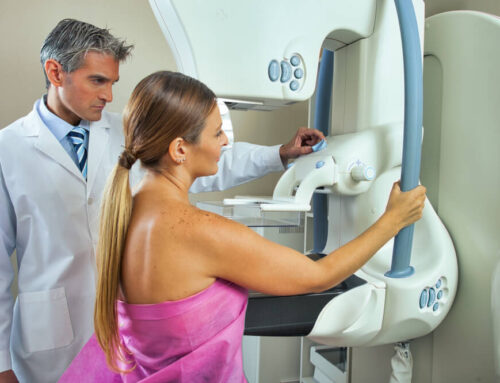At Breast Care Center Miami, we offer various breast screening methods, such as mammograms, biopsies, and ultrasounds. Regular examinations help us detect breast cancer at its earliest stage before symptoms appear and when it is most curable.
In this article, we’ll look at the different tests that our clinic performs and how we can help with your breast concerns. We’ll also cover some common breast diseases’ names and help you prepare for your exams.
We’ll also answer some of the most frequently asked questions: How do you prepare for a mammogram? What is a core biopsy? What can I expect from my results?
Breast Cancer Risk Factors
Before we discuss the types of screening methods that we provide, it’s important to know the factors that can increase the risk for breast cancer.
These include:
- Age: The risk increases with age, and many women receive a breast cancer diagnosis after they turn 50.
- Reproductive history: The risk of getting breast cancer increases if you experience your first menstrual period before 12 years old. Also, it increases if you undergo menopause after 55.
- Having dense breasts: We may have difficulty seeing tumors on a mammogram if the patient has dense breasts. This is because they have more connective tissue than fatty tissue.
- Radiation therapy: Patients who have undergone radiation therapy on their chests or breasts for another disorder before the age of 30 may have an increased risk of developing cancer later on in life.
- Family history: If your mother, sister, or daughter have had breast cancer, your risk increases too.
Breast Disorders and Exams
The following are the types of breast exams that we perform at our women’s breast care center:
Mammograms
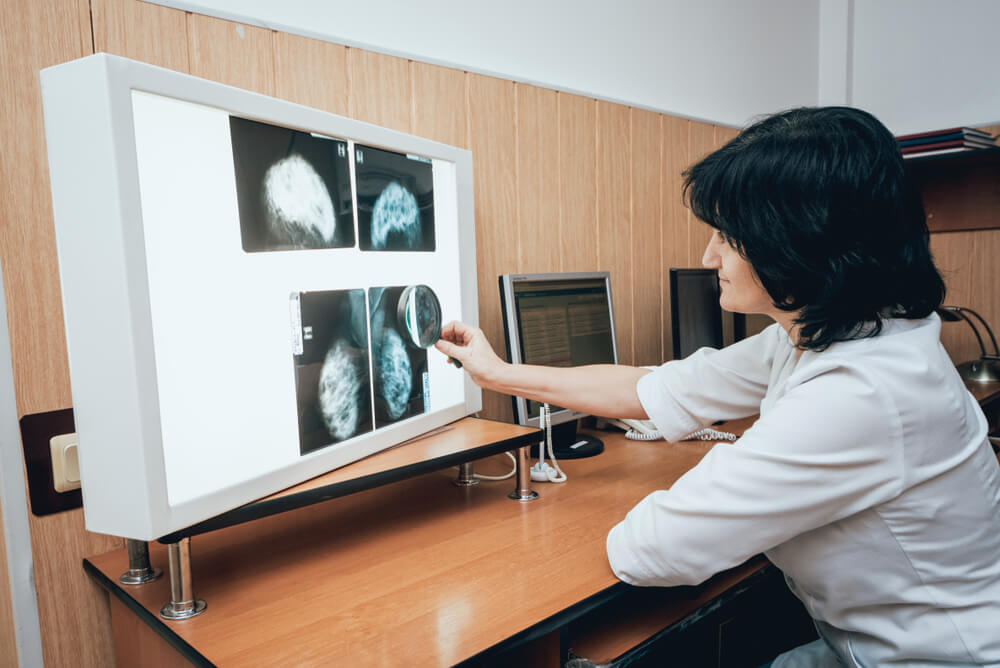
Mammograms are one of the tools that we use to screen for breast cancer and diagnose, evaluate, and follow patients who have had breast cancer. They take an X-ray image of the breast.
Types of Mammograms
There are two types of mammograms:
- Screening mammograms: can help detect breast changes if you don’t have any symptoms or breast abnormalities.
- Diagnostic mammograms: These evaluate any suspicious breast changes such as pain, nipple discharge, or breast lumps, and they can also study any abnormalities that doctors have found on a screening mammogram.
If you have a high risk of developing breast cancer, your doctor may recommend that you start screening mammograms at a young age to look for any early signs of cancer.
In addition, it is important to note that the procedure is safe as the machine uses low radiation doses. It takes about 20 minutes, and some women experience minimal discomfort.
The patient stands in front of the x-ray machine, and the radiologist places their breast between two plastic plates. These flatten the breasts to produce a clear image of the tissue inside.
Preparing For a Mammogram
Here’s how you can prepare for a mammogram:
- Avoiding using deodorants: This refers to antiperspirants, lotions, perfumes, and creams under your arms or on your breasts, as their metallic particles can be visible on a mammogram.
- Taking over-the-counter pain medication: You can take aspirin, ibuprofen, or acetaminophen an hour before your scheduled appointment, as this can help ease discomfort.
- Bringing your past images: If you’ve already gotten a mammogram and are visiting a new women’s breast care center, bring your past mammogram images so the physician can compare them with the new results.
- Visiting when your breasts are less tender: We recommend getting a mammogram when your breasts are less likely to be tender to reduce discomfort.
Ultrasounds
A breast ultrasound uses sound waves to produce breast tissue images, and it helps check for tumors and other breast abnormalities.
We apply a clear gel to your breasts during this procedure as this allows ultrasound waves to travel through the skin. Then, place the probe on your skin to create images of the inside of your breasts.
The images are in black and white, but if there are any tumors or cysts, these will appear as dark areas.
However, some breast lumps appear as dark spots, but they’re benign or noncancerous.
Other noncancerous breast conditions include:
- Fibroadenoma: This is a benign tumor that develops in the breast tissue.
- Intraductal papilloma: It is a benign tumor that develops in the milk ducts.
- Breast fat necrosis: This refers to a lump of dead or damaged breast tissue.
Ultrasound Benefits
There are various benefits that come with ultrasounds, as they can help us determine whether:
- There is a lump in your breasts.
- You have a fluid-filled cyst or a tumor.
- You need further tests to check for cancer.
In addition to that, ultrasounds are safe for pregnant women as they don’t require radiation. The ultrasound waves we use during the procedure are the same type of ultrasound waves used to monitor fetus development.
What to Expect
If you have an abnormal ultrasound exam, you may need to undergo a magnetic resonance imaging (MRI) scan, which produces more detailed images.
However, this exam is unable to tell whether you have a cancerous or malignant tumor, so if the images show a solid tumor in your breast tissue, the physician may have to perform a biopsy.
This allows them to collect a sample of breast tissue and send it to a laboratory for analysis to check for cancer.
Biopsies
What is a core biopsy? What are the risks that come with these procedures?
In the sections below, we’ll explore the different types of biopsies our women’s breast care center offers and explain what patients can do for their breast biopsy preparation.
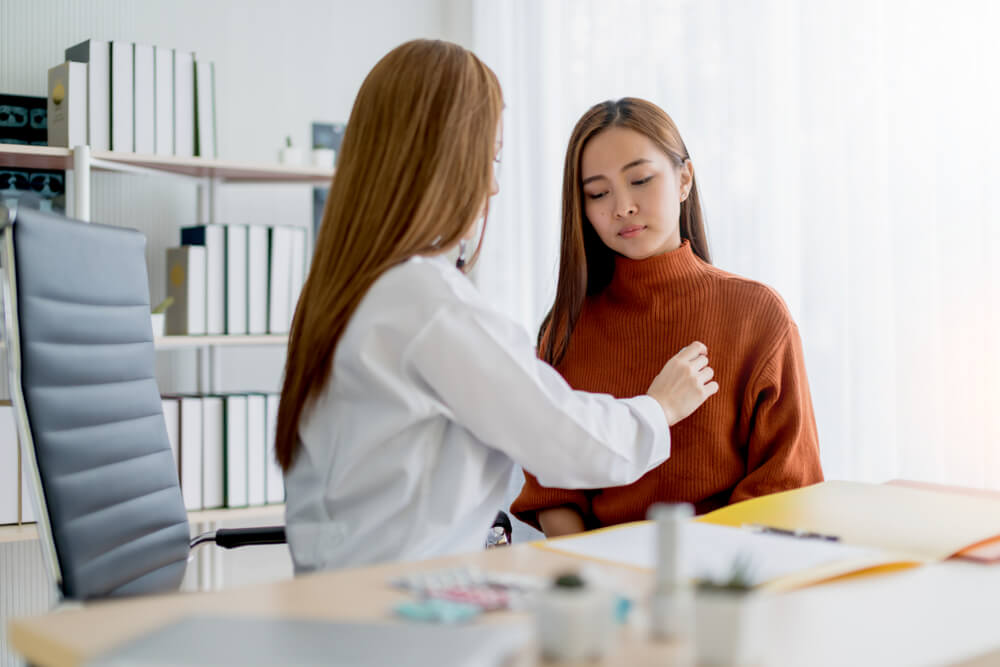
Types of Breast Biopsy
There are various types of breast biopsy procedures, and these depend on the size of your breast lump location and where it’s located.
These include:
- Core needle biopsy: This assesses breast lumps that are visible on mammograms and ultrasounds. We insert a thin needle into the area of concern and remove tissue samples. No cuts are required during this procedure.
- Fine needle aspiration biopsy: The physician inserts a thin needle into the suspicious area and removes a small sample of fluid or tissue. The procedure doesn’t involve any cuts, and it can help us check if the area of concern is a cyst or a solid lump.
- Surgical biopsy: During this procedure, we make a small incision into the breasts and remove part or all of the area of concern. If we are unable to find the lump, we insert a thin needle with a very thin wire into the breasts and use x-ray images to help guide us to the lump. Then, we follow the wire to find the lump.
Breast Biopsy Preparation
Before you come in for your breast biopsy procedure, make sure to let your doctor know if you are pregnant, allergic to any drugs, or have any other breast concerns.
You should also tell them if you are taking any medications, such as Aspirin, Plavix, or Coumadin, as the physician can determine whether you should stop your current treatment.
Further to that, we also recommend:
- Wash your breasts and underarms with soap and water.
- Wearing or bringing a tight-fitting sports bra.
- Avoiding using deodorants.
Book Your Appointment Today
Breast cancer is not preventable, but breast exams can help detect tumors in their early stages and prevent them from spreading.
If you are concerned about your breast health or have a high risk of developing cancer, call our office at (305) 271-3300. We’ll assess your issue and recommend any tests that might be suitable for you.


